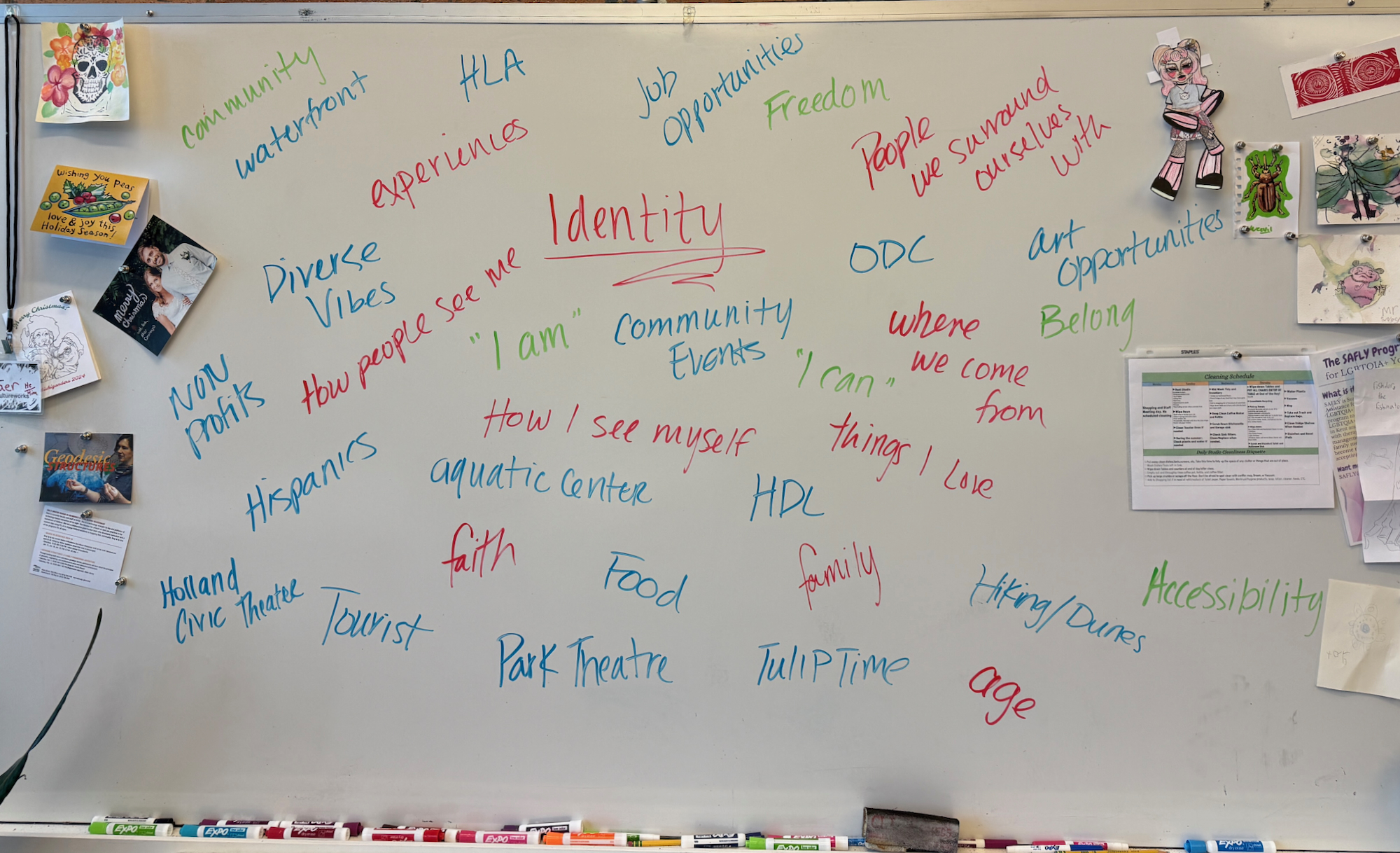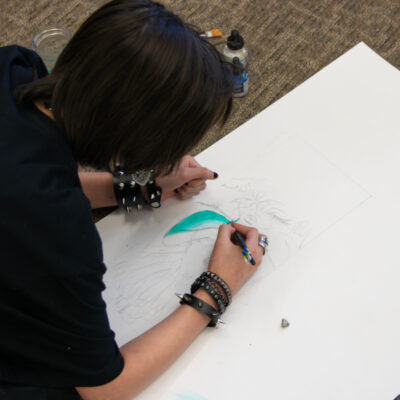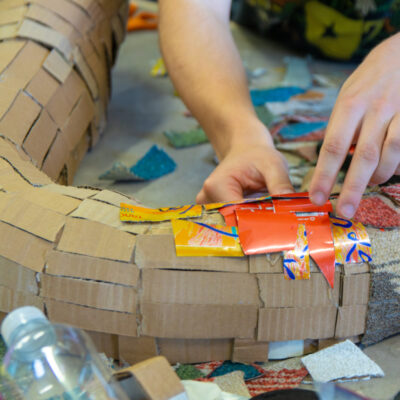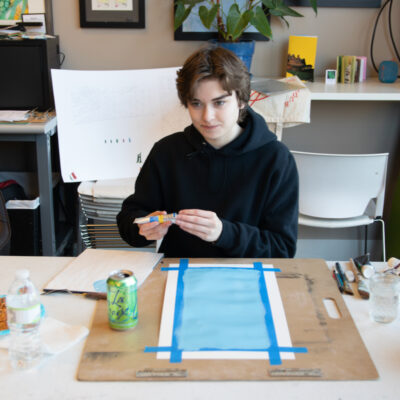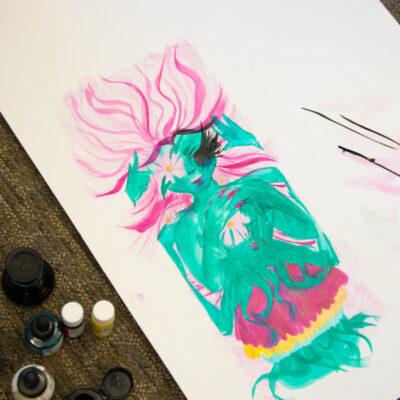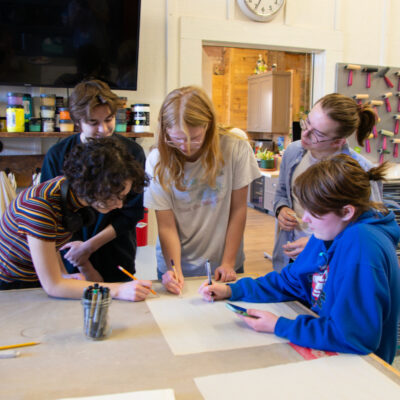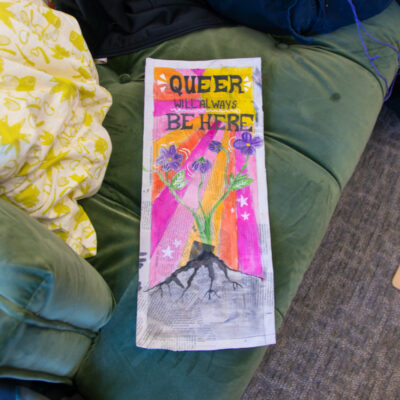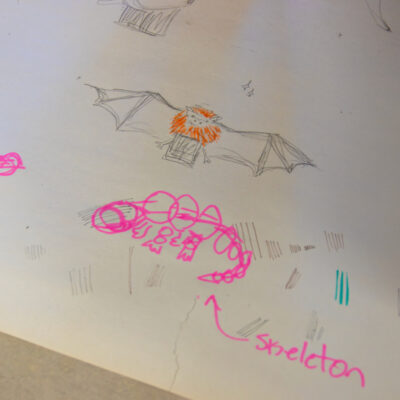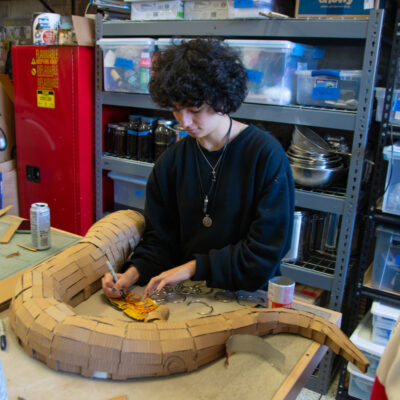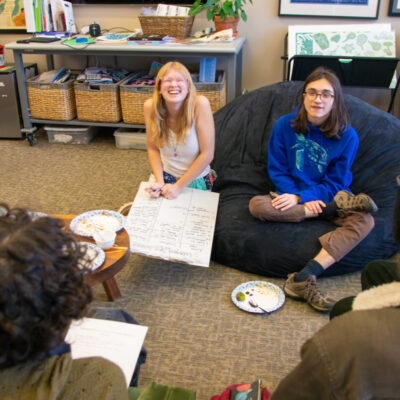Using banners and sculptures, Student Advisory Council has created art this semester that celebrates diversity and advocates for protecting our community members.
When you think about the word “community”, who comes to mind? Family and friends? Neighbors you don’t know? Those you think are very different than you? How about the bumblebees and rabbits that meander nearby?
Robin Wall Kimmerer, in her book Braiding Sweetgrass, talks about other-than-human persons in our communities and the role that language plays in shifting our attitudes and behaviors toward them. English typically refers to humans as “he”/”she”/”they” but relegates all other things to the language of “it.” Kimmerer explains that in Bodewadmimwin, an Anishinaabe language, there is a different “to be” verb for animate things like plants, animals, rocks, mountains, water, fire, places and even human-made things like songs and drums. This verb, used for essentially everything that isn’t human-made and lifeless (i.e. a plastic pen, a mass produced table) is Yawe. It’s the “grammar of animacy,” using language to reshape our perception to the truth that the world around us is alive.
Kimmerer writes, “To speak of those possessed with life and spirit we must say yawe. By what linguistic confluence do Yahweh of the Old Testament and yawe of the New World both fall from the mouths of the reverent? Isn’t this just what it means, to be, to have the breath of life within, to be the offspring of Creation? The language reminds us, in every sentence, of our kinship with all of the animate world.”
Just as language can evoke reverence and reshape our relationship to all of our neighbors, human and non-human alike, art has the capacity to give us a new lens for viewing the world. The Student Advisory Council has done a beautiful job this semester of thinking about expansive definitions of community and making art that reflects kinship with neighbors of many species.
The Holland Area Arts Council and the City of Holland teamed up to work on new banners for downtown around the theme of “Celebrating Diversity.” Members of CultureWorks, alongside a number of other community organizations, were invited to submit banner designs celebrating their own identities, or things that we loved about the diversity we see around us in Holland. Through the multitude of voices and submissions, the collected banners represent the beautiful variety of experiences and perspectives that make Holland the place that it is. In the midst of administrative attacks on language, diversity, and environmental protections, SAC students were insightful about our home, the gifts that come from having diverse neighbors, and their own particular roles in our ecosystem.
Even as we thought primarily about our human community and celebrating each of the unique gifts and traditions we bring to Holland, our non-human neighbors played a critical role in many of the banner designs. One, made by a student who loves to garden, features a human in a forest clearing with one hand buried in the grass and the other gently holding a bee. Another features a personification of Mother Earth, a call to live in harmony with the natural world around us. One piece utilizes the image of a coniferous tree to talk about the resilience of our truest human selves as well as the world around us. One student used purple violets as a core image in their vibrant banner design celebrating the endurance of queerness.
Earth and trees and bees and flowers were inseparable from students’ concepts of identity and community. It comes as no surprise, then, that upon completing the banners, students decided to undertake another advocacy project centered on endangered and threatened species that are native to Michigan.
Using recycled materials, the Student Advisory council has spent months looking at the details of the Eastern Red-backed Salamander, the Spotted Turtle, and the Little Brown Bat and translating them into beautiful art pieces. They’ve sculpted cardboard bodies and covered over them in a mosaic of carpet samples, empty pop cans and a defunct umbrella. The creatures will take a tour of the Holland Area this summer, starting at the Nature Education Center at Hemlock Crossing for Endangered Species Day before making appearances at Macatawa Water Fest and the Herrick District Library.
As students finalize the sculptures and their banner designs get printed on vinyl to hang in downtown Holland, it’s a reminder that attention and reverence go hand in hand. Thinking about identity and diversity, they’ve created beautiful celebrations of the particular things they love about themselves within the context of our community. Looking closely at photos of our endangered friends, the SAC teens have lovingly reflected the coloring and patterns (and number of toes) in the art that they are making. Both banners and sculptures are a call for us to pay attention and make choices that are good for all the beings around us, human or otherwise. But they are also a lesson in a new language for us humans; one that calls strangers, salamanders, turtles and bats “sibling”, “neighbor”, and “friend.”
As we share space with these thoughtfully-shaped art pieces, we have the opportunity to let them shape us in return. We are invited to pay attention and to shift our language to one that recognizes the aliveness of the multitude of beings around us, from the soil that supports our every step to the family that just moved in next door.
To all of our neighbors: we’re glad you’re here.
Much love,
The CultureWorks Crew




